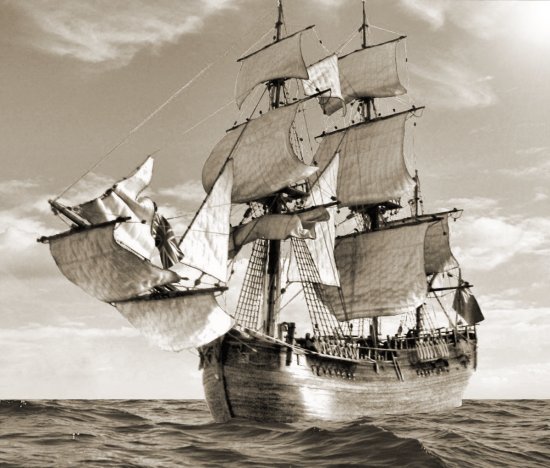HMS Endeavour (James Cook)
Images 1 |
2 | 3 | 4
| 5 info | History
| Construction
 |
Officially James Cook's voyage was a scientific
expedition to observe an eclipse of Venus, June 1769, but secretly
it was a commission by the English admiralty to find a mysterious
southern continent, which had already been discovered and visited
by Dutch explorers between 1605 - 1636. |
He then continued on to Tasmania and the east-coast of Australia
where they anchored in what would be known as "Botany Bay".
When it became time to leave, the ship nearly went down on the coral reefs
north of Botany Bay, and many of her crew died of fever when she headed
further north to Batavia, the political and commercial centre of the VOC
in Asia, before finally heading for home.
The Endeavour was a solid, broad beamed and shallow draught Whitby collier.
All excellent qualities for exploration as fully recognized by James Cook:
“A better ship for such service I never could wish for“.

Concept, content & Design: The Art of Age of Sail